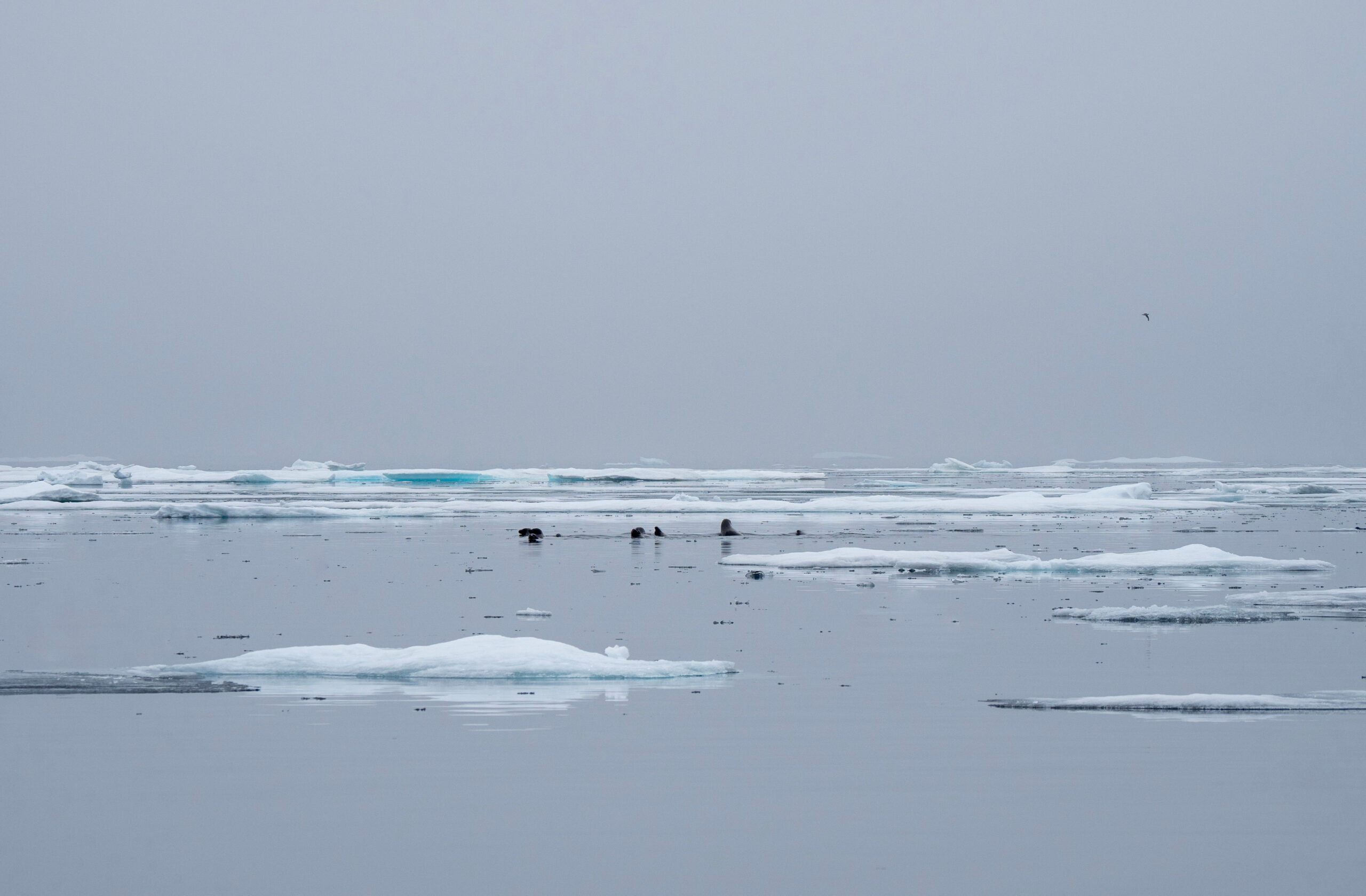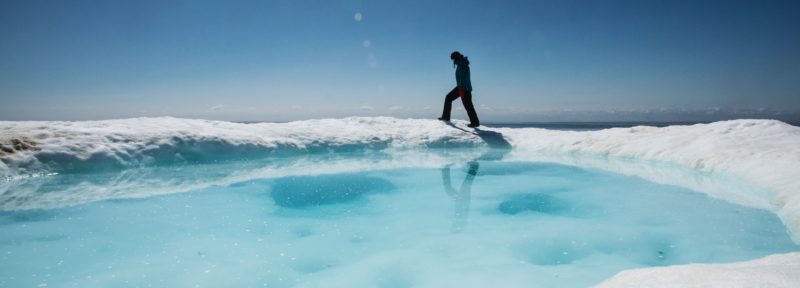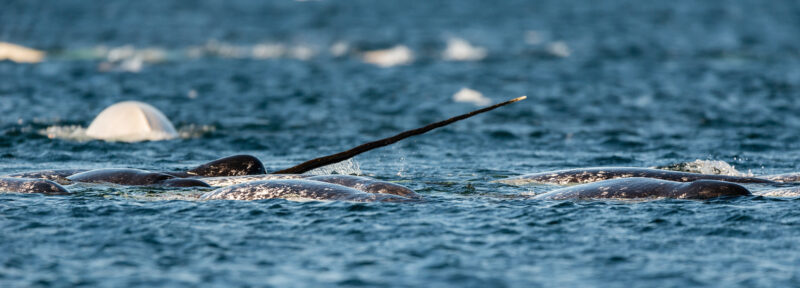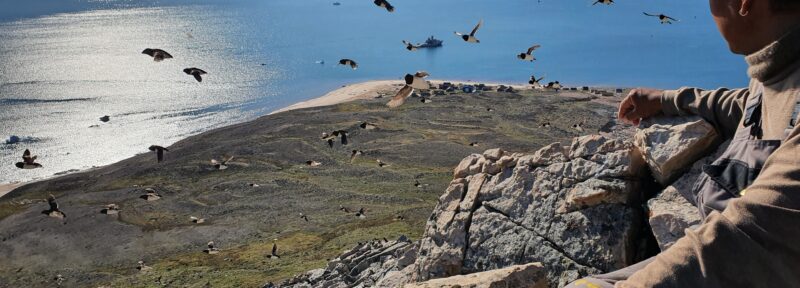The Ice Bridge: Monitoring the Wildlife of Pikialasorsuaq
Welcome to The Ice Bridge, a new series about the importance of the North Water Polynya. Through interviews with experts in Canada and Greenland, we’re learning more about one of the Arctic’s most fascinating ecosystems.
The Arctic’s largest polynya, known as Pikialasorsuaq in Greenland and Sarvarjuaq in Nunavut, is both a biologically rich hotspot for marine mammals, seabirds and fish and a crucial source of sustenance for the people of the region.
“This area is super fruitful and attracts belugas, narwhal, polar bears and other wildlife all year round,” said Fernando Ugarte, a biologist and head of the Department of Mammals and Birds at the Greenland Institute of Natural Resources in Nuuk. “That makes it very important for the people who live there because they can hunt all year, on both sides of the polynya, in Canada and Greenland.”
Ugarte leads a 15-member team of biologists at the institute who study birds and mammals throughout Greenland, including Pikialasorsuaq. They advise government officials about conservation and sustainability measures for these species and share their scientific research with the public.
Spanning 85,000 square kilometres between Greenland’s west coast and Canada’s Ellesmere Island, Pikialasorsuaq—which means “great upwelling”—is created by an ice bridge that forms in Nares Strait each winter on its northern edge. Strong sea currents and winds push the ice out of the area, ensuring a large area of open water and allowing sunlight to penetrate the surface to foster huge phytoplankton blooms, the basis of the marine food web. These conditions attract marine mammals and seabirds that gather to mate and feed throughout the year. In the summers, 80 percent of the world’s Little Auks migrate there, as do other seabirds like eider ducks. Narwhal swim closer to shore seeking colder water in the fjords with glacial runoff.
“This might be the only place in the world where locals can hunt narwhal all year,” Ugarte said.
But the polynya is not immune from the impacts of climate change and industrial development that are affecting the rest of the Arctic, he said. “It’s still a pretty pristine area. Climate change is the big wildcard because we’re not sure how it will impact the region.”
In warmer years, the ice bridge has failed to form, and broken ice drifts into the polynya, lessening the amount of sunlight below the surface—a change that “may not be so good” for the marine wildlife or the local communities, he said.
“The polynya is a good place for humans who hunt,” Ugarte said. “People here are very attuned to the rhythms of the seasons.”
Local hunters rely on both new and old technology, from using dogsleds on the ice, kayaks when pursuing “skittish” narwhal, to motorboats on open water. But in recent years, the changes in ice formation and unpredictable weather have made navigation more difficult, and “what has worked for generations is not necessarily working now,” he said.
“As biologists, we need to see what changes are coming and let people know what to expect so that they can adapt and live with dignity in the same places their ancestors have lived,” Ugarte said.
Biologists on his team focus on studying the wildlife that is important to local communities and work closely with hunters to incorporate their knowledge and build trust, he said. For example, they conduct aerial surveys of narwhal and belugas every few years to monitor the health of those populations and include a local hunter as part of the team. In 2019, researchers noticed a reduction in the narwhal population in this region, so the survey was repeated this past summer, although the results have not yet been finalized.
Researchers also rely on hunters in Qaanaaq, a village in northwest Greenland, to attach satellite tags to narwhal and walrus so that scientists can track their migration patterns, monitor how those species spend their time, and gather other important data. Local hunters also share their observations with Ugarte and other scientists when they notice changes in the wildlife, such as new patterns in the distribution of narwhals.
Industrial development, such as a proposed zinc mine in west Greenland, could have an impact on marine mammals and seabirds. And Ugarte worries about the impact of increased ship traffic from the Baffinland iron ore mine in Nunavut, which has been shown to affect the narwhal population in that region.
“We think it may be having an impact on narwhal here too,” Ugarte said, adding that Greenland was not properly consulted about possible environmental effects of the mine.
That’s why the international letter of intent to protect Pikialasorsuaq signed in October 2023 between Canada and Greenland is “super important,” he said. The polynya, with its ice bridge linking the two countries, has historically created a strong bond between communities on both sides of Baffin Bay that rely on Pikialasorsuaq and consider it to be of great cultural value.
As for the future, Ugarte hopes that more research can be done on the area just north of the polynya, where thick, multiyear ice has started to disappear in the summer, potentially causing wildlife like narwhal, polar bears and seals to migrate north.
“Big changes are happening there that I would very much like to understand,” Ugarte said. “It’s the last refuge for Arctic wildlife.”
Want to learn more about Pikialasorsuaq and how it forms? Check out this video from our colleagues at Oceans North Kalaallit Nunaat.
Ruth Teichroeb is a regular contributor to Oceans North and former communications director. She is based in Sidney, B.C.





